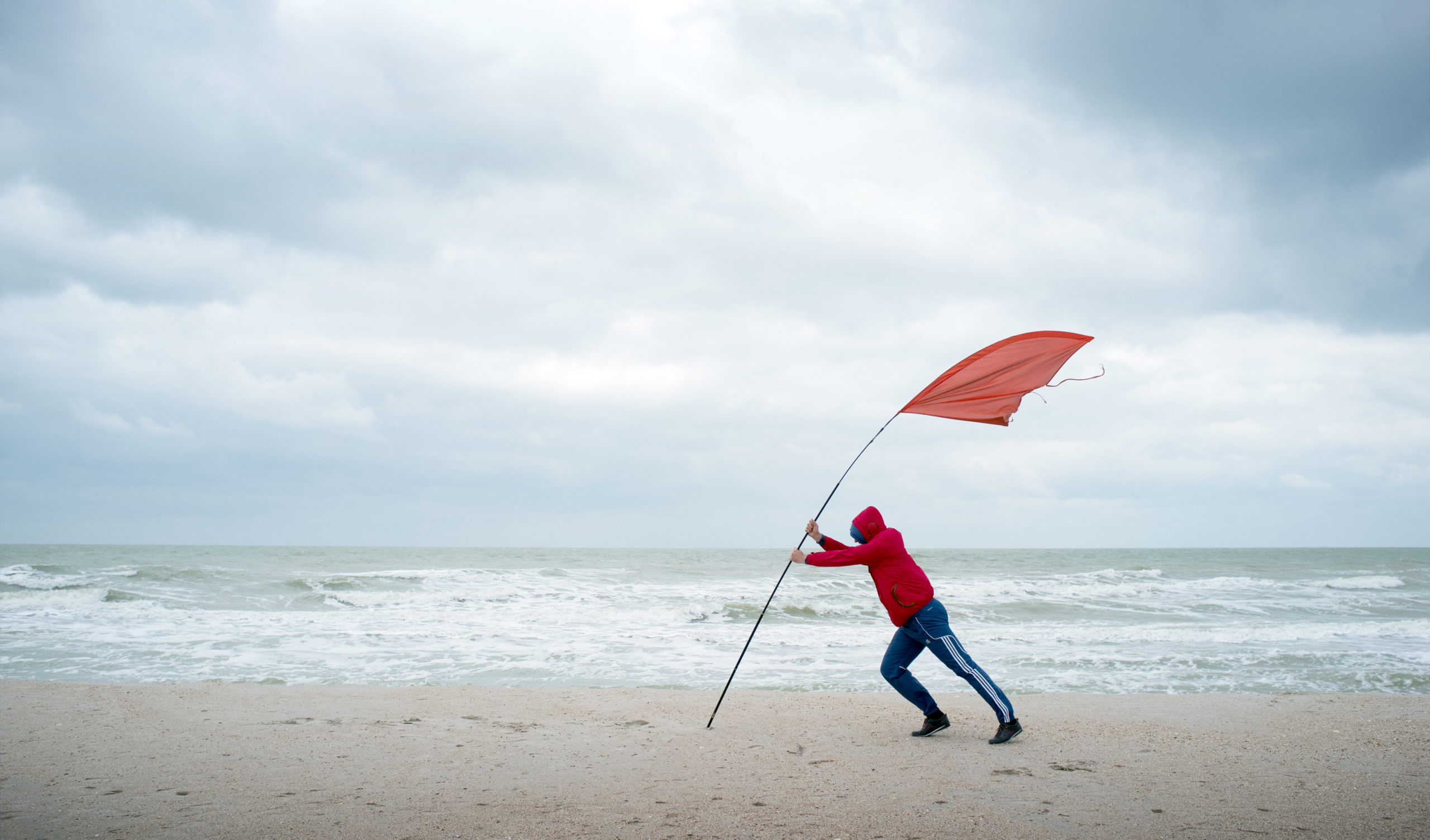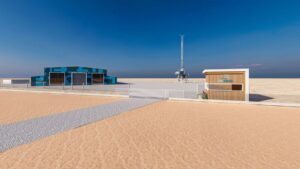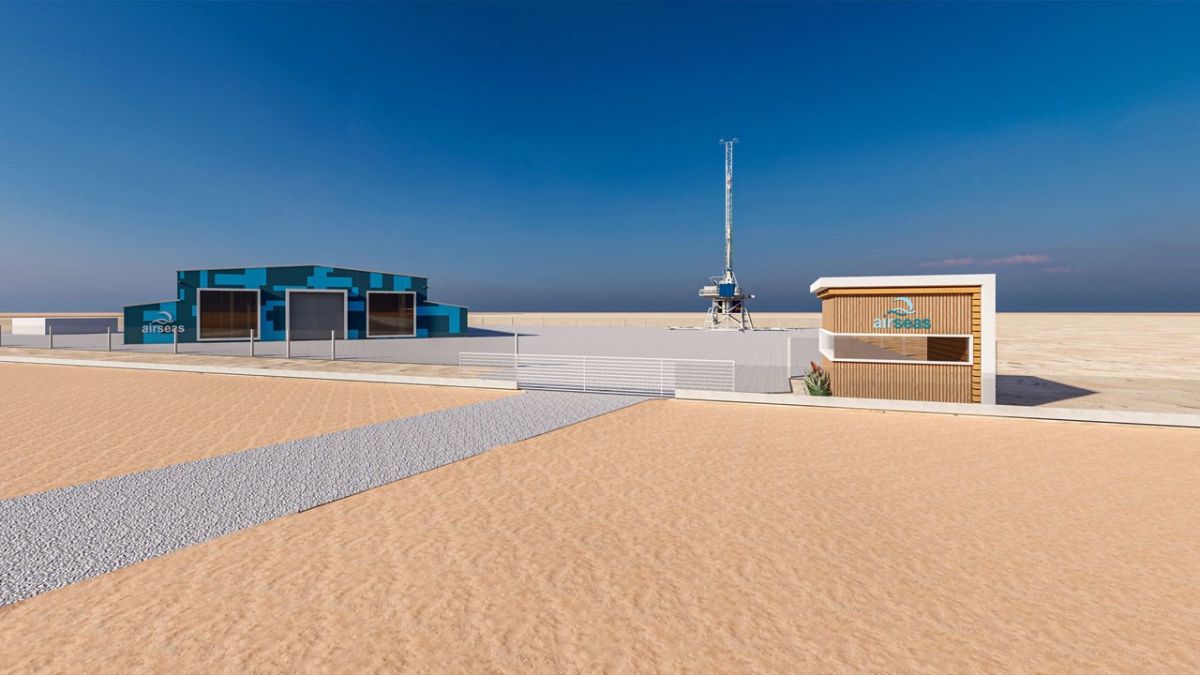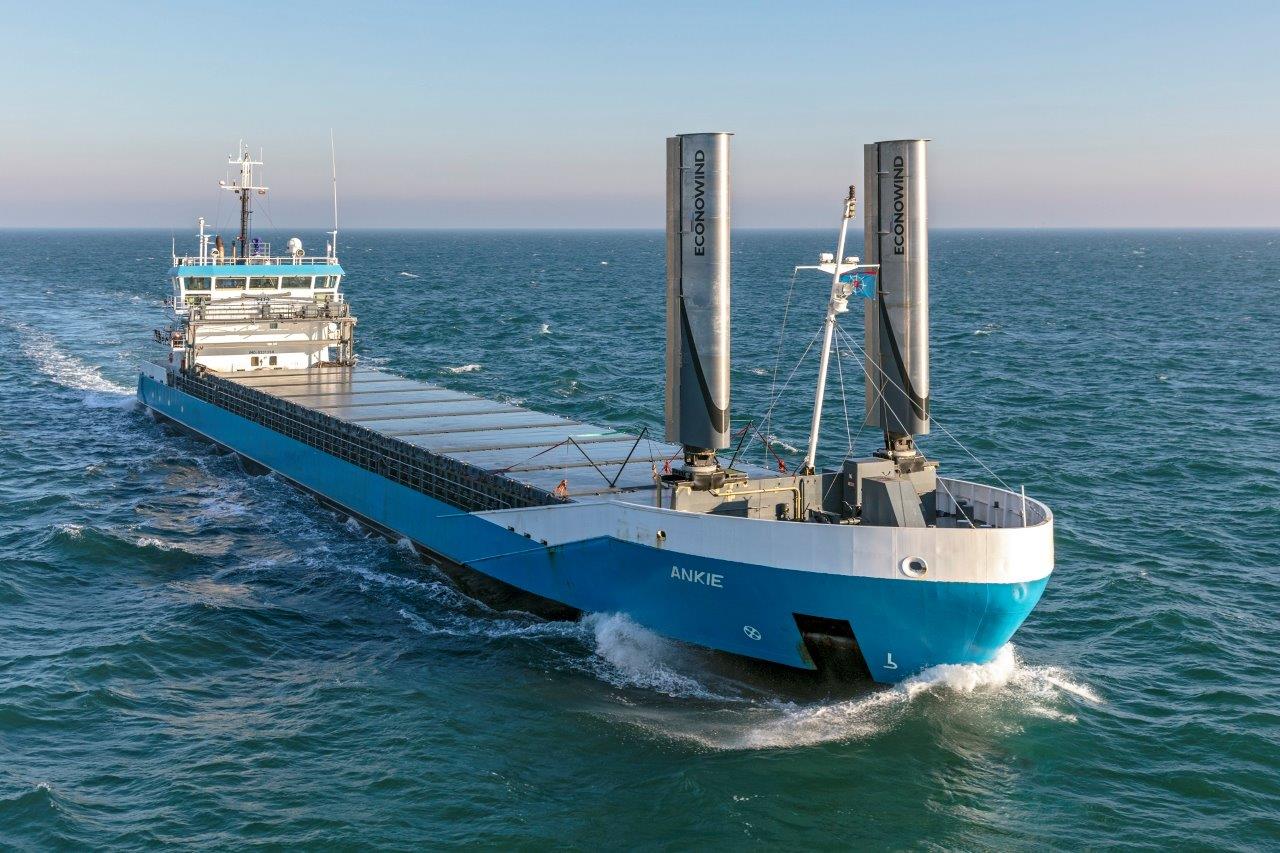Wind assist technology developers have fresh buoyancy under their wings writes Conor Fürstenberg Stott from the RINA/ISWA wind propulsion conference in London
by Conor Fürstenberg Stott, partner, Fürstenberg Maritime Advisory
If aliens arrived from space and asked you what a folk song is, by way of explanation you need do no more than play them Bob Dylan’s – Blowin’ in the Wind. Released in 1963, this rhetorical protest song of where the answer is to be found, has been described as “impenetrably ambiguous”: either the answer is so obvious it is right in your face, or the answer is as intangible as the wind’.
When Bob Dylan wrote the lyrics to this song the term Wicked Problem had probably not yet been coined, though the issues he raised would fit such definition well. A Wicked Problem in short describes highly complex problems which seem to resist their own resolution. However sometimes solutions are so obvious they indeed are right in your face.
Wicked problems
From the 16th to 17th of February I attended the annual Wind Propulsion conference which brings together The International Wind Ship Association (IWSA) and the Royal Institute of Naval Architects (RINA). This year sponsored by Yara Marine Technologies; it was held at the International Maritime Organisation (IMO) headquarters in central London. It did not go unmentioned that this venue is where the global industry is currently squirming as it tries to cope with the ultimate Wicked Problem for shipping – that of decarbonisation.
At this event though I detected a swagger in the step of many presenters and attendees. The problem doesn’t seem so wicked to them, its resistance to resolution is crumbling and the complexity is solvable. For them a large part of the solution, rather than being intangible, is right in our faces and not only blowing in the wind – because it is the wind.
Sure, WASP (Wind Assisted Ship Propulsion) offerings are not always neatly packaged up ready for the industry to adopt, and there are still plenty of questions to be answered. Wind power apparently doesn’t marry well with current fossil driven shipping pace and supply chains. But such understandable yet uninformed perceptions are rapidly changing as the industry, through tightening regulation and customer pressure is taking the time to really understand the wind opportunity. Moreover, the WASP OEMs have an ever growing following who in turn help to unpack and reveal the insides of the WASP offering.
Inflection point
The fact of the matter is that we are a long way down the road to solving remaining challenges; largely about technology, definition of the power available and integration with regulation. Following many long hard years that the wind power OEMs have spent trying to reach the minds of the industry and investors, we are now seeing the uptick of installation and newbuild projects; from 8 new announcements last year to 24 this year so far. Perhaps we have finally reached the inflection point? As Gavin Allwright , IWSA general secretary said when he kicked off the event,
“Last year we were on the launch pad with engines running and all ready to go, this year we can see a gap opening up under rocket, we have lift off”.
Innovating the shipping model
Is this innovation? Haven’t we had sailing ships for thousands of years? To be considered true innovation, a proposal should combine new technological solutions with new commercial propositions, or present a novel combination of existing tech/commercial objects. The WASP developers are certainly working both elements well. From the commercial side they are finding ways to deal with the perceived unreliability of wind e.g., employing frameworks such as propulsion as a service and dispersal of investment risk for shipowners through time-based performance guarantees. Others have engaged vertically or horizontally in the value chain such as with cargo owners and technology affiliates attached to shipowners.
Occasionally, depending upon the size and maturity of proposals, some shipowners are willing to take a leap of faith somewhat and invest directly. As WASP solutions become more widespread and business cases better understood we will likely see an increasing number of shipowners willing to invest directly, accepting that the risk levels are lower than they previously assumed. Meanwhile the technology element of the formula will become increasingly important as the market matures, populates, and heats up.
Now, at the cusp of this evolution we are seeing new technologies entering the market while the players collaborate around some of the remaining issues that they can and should be resolving as a group.
No one solution
The first keynote of the conference was delivered by Arsenio Dominguez, IMO Director Marine Environment Division.
He mentioned how decarbonisation is a priority, CII will evolve and how MEPC 80 is critical for the development of an enhanced strategy. He also pointed out that as the IMO deals with the enactment of mandatory measures which need to be developed, implemented and enforced, everyone’s input is required.
In light of this, issues such as new training requirements and just & equitable transition are critical but so also is the fact that decarbonisation means not only one solution. He urged therefore that all the technical possibilities with wind are brought forward to the IMO, both retrofit and newbuild.
Perhaps most interesting was, despite his prioritisation of decarbonisation he specifically mentioned the role of WASP to reduce noise pollution at sea.
This aspect, only recently receiving the attention it deserves was a welcome input and whereupon Gavin Allwright hastened to add that WASP reduces all emissions from ships not only air and noise.
Other wind related stories
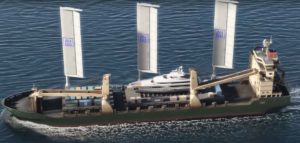
Whisper and sidewinds
Embryonic
In his welcoming address from the sponsor Aleksander Askeland – Yara marine technologies laid out their activities generally and in the WASP area, describing their current project with Cargill and BAR. They also have another as yet undisclosed project to announce in the coming months and run Wind Wings Wednesday on Linkedin. His outstanding comment was,“-This industry is embryonic”, a statement a person in his position does not make lightly.
We heard from Kazuyuki Ouchi – Ouchi Ocean Consultant Inc. who are developing a 75000 t dwt sailing bulk carrier that also generates hydrogen from the propeller when not in use. Unusually the hydrogen is to be stored using an MCH/Toluene system.
Yoichi Wakabayashi – MOL presented on the progress with the 1st Wind Challenger ship SHOFU MARU. A large, single telescopic crescent sail is employed forward, aboard this 100.000 t dwt dry bulk carrier. Installed during July 2022 the fuel savings are expected to be 5-8% but performance data is still being collected. Wakabayashi San elaborated during his presentation on the sea trials with the rig and how the vessel performed a Williamson Turn. He also described the failsafe system for complete power loss and the parameters for emergency reefing.
Some of the questions from the diverse audience illustrated the kind of challenges in this space. Among those questions were:
- How long did the installation take?
- Do you employ remote measuring of wind by LIDAR?
- When retracted and locked athwartships in port, how does the windage from the sail affect the mooring integrity?
- Will you benchmark against a copy vessel without the sail, i.e., to understand any drag penalty for unfavourable wind conditions?
- How have you accounted for forces in terms of rig stress, heeling and inertial forces? How have you set reefing parameters?
- Did you fit and hull appendages to mitigate for leeway?
- How is the main engine managed? For constant speed or RPM?
- How is bridge visibility effected?
CII/EEXI/EEDI
Nick Contopoulos and Baiqian Jaung, Anemoi Marine Technologies and LR China presented on the Key features of Wind Ready Retrofit of Kamsarmax bulk Carrier. Employing 3 rotors on an IMO global route basis at 11.5 knots they were anticipating 14% fuel savings and LR – Anemoi will later release a paper on the project. Critically this will include details around the effect of the installation on EEDI and CII which should be of exceptional interest to the industry.
They are taking a wind ready perspective as follows:
• Take opportunity in dry docks to prepare the deck.
• Install the rotors later when opportunity presents.
• Prepare ship for addition of more rotors but wait for installation. This reduces short term costs, mitigates for supply chain bottlenecks but still anticipates regulation.
Joint thinking to seize synergies
Jukka Kuuskoski – Norsepower presented on market status, customer benefits, collaboration and engineering. He sees the market as currently niche, but with clear signals of increased confidence and growing participants. From the fuel saving and ship efficiency perspective he raised the opportunity for collaboration with other technologies such as hull air systems. Linked to this is the need for joint thinking with ship design and class rules, use of realistic performance prediction methods and tools, collaboration on safety and marketing. He highlighted how shipowners and charterers have started to share the benefits and costs of wind propulsion installations. This includes charter party agreements developed to cater for common interest. These contracting mechanisms in turn of course support financing possibilities.
When asked about the stabilising effect of rotors he mentioned anecdotal evidence of ships making the decision to depart harbour in foul weather due to confidence in the additional stabilising effect of their rotor installation. This comment came in contrast to the usual stability concerns held when shipowners consider WASP installations.
Getting technical
Following these discussions around ship project particulars and more commercial issues the presentations became more technical, as one would expect in this forum. Norbert Bulten, Wärtsilä spoke about the use of gate rudders which depend less upon propeller load for performance. Their EU funded project exploring this technology may yet yield import results for WASP.
Martina Reche-Vilanova, North Windship technologies spoke about Preliminary Study of the Propeller and Engine Performance variation of commercial Ships with wind propulsion systems.
Given ships are designed with a propeller and engine configuration to drive a certain hull at a given speed, things change somewhat when wind power is employed to assist. Perhaps the propeller for instance is no longer as efficient, as it was designed under different flow conditions. Their project, being run in conjunction with DTU (Danish Technological University) is looking, among other things at the application of variable pitch versus fixed pitch propeller scenarios.
Is WASP weather routing a unicorn?
Maxime Dupuy, D-ICE Engineering spoke about the benefit of optimizing both speed and route in wind assisted ships multi-objective weather routing.
Vessels which are trying to use the wind to assist with or entirely power a voyage see the weather route offering differently to a fully motorised vessel.
While the complexity involved with this project is certainly beyond the scope of this article, one takeaway was that wind assisted vessels benefit greatly from route and speed optimisation, far more so than do fully motorised vessels.
This points to a kind of feedback loop for sailing vessels which owners may not fully understand. Particularly in a scenario where it is necessary to slow steam a vessel in order to reduce emissions for regulatory or pure efficiency reasons, concurrently employing WASP and WASP weather routing may pay back with far more leverage that currently understood.
Progress on WASP performance standards
There followed three presentations which dealt with understanding and starting to standardise the measurement of WASP power contribution. Sofia Werner, RISE spoke about their work on Key performance indicators for wind powered ships, Konstantinos Fakiolas – FINOCEAN LTD spoke about Empirical methods for developing WASP performance indicators and Heuristics decision making under uncertainty and Juliette Bataille BV solutions M&O described the PERFO Methodology benchmark for wind assisted propulsion ship performance estimation.
This type of work is particularly important in the industry as it can be very difficult to help shipowners and others to investment decisions where quantifying expected gains defies easy quantification. It is similarly difficult to standardise the assessment methodology and verification process. RISE are proposing some very practical approaches to the topic including a standard vocabulary and power rating expression. They currently have a proposal under review and wish to receive feedback, aiming to publish in September 2024.
FINOCEAN talked about the difficulty with concluding charter parties where savings are difficult to assess with sufficient accuracy. Among other points, they made some very affirming statements regarding wind probabilities on major shipping routes, and one felt that surely it would be possible to find agreement regarding defaults such as this. BV solution M&O are doing discipline modelling work to develop true performance of hull/ sail combinations.
This is high detail fluid dynamics content which, when the methodology is developed toward variable situations, applied for specific ships and power combinations will yield a great deal of accuracy. These kinds of projects as mentioned above, when taken in combination signal a great strengthening of the industry’s ability to accurately predict performance. This will be a powerful tool in the hands of the OEMs both in market terms but also toward the regulators and policy makers who are attempting to position WASP.
Missing pieces of the puzzle
During the second day of the conference there was a general continuation of the themes addressed with contributions from; Rogier Eggers and Anton Kisjes- MARIN, Roberto Prever – NAOS ship and boat design srl, Ken Goh – Knud E. Hansen Australia, Kristoffer Eide – Sintef Ocean, Rodrigo Azcueta – Cape Horn Engineering, Alberto Llopis Pascual – bound4blue, Olov Lundbäck – RISE, Thomas James – Hexcel and Pierre Cordier – XP Sea.
We heard about tank testing, virtual modelling, various vessel and rig applications, challenges solutions and missing pieces of the puzzle.
In his keynote Gavin Allwright told us that he had undertaken 10 media interviews in the last week, so clearly the interest is picking up. He also told us that if policy, regulation, and the forces necessary for scaling do combine as they should, rolling out this decade, the decarbonisation of shipping is within sight.
I have the feeling that wind is not only a fuel of the future but may have a bigger part to play than any of us dare to fully anticipate. Indeed, I believe, the answer is blowin’ in the wind.























